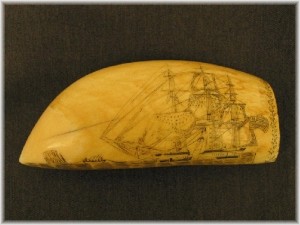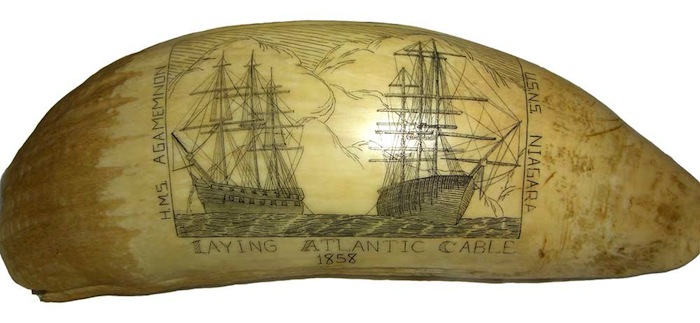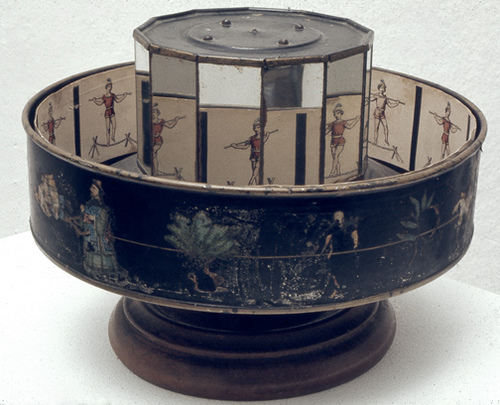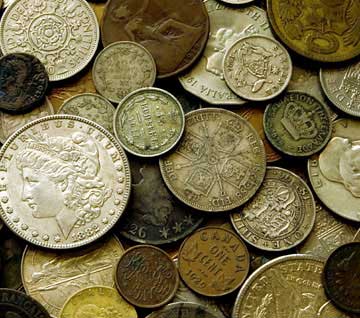In its broadest sense, scrimshaw is the art of fashioning objects from or engraving pictures on bone or ivory. Its origins go far back in time. Two thousand years ago the Chinese polished the surface of ivory, etched or scratched a design into it and then highlighted the image with ink. Archaelogists in North America have found works of art made by native peoples, comparable to scrimshaw, dating back to 100‑200 AD.
 Some say modern scrimshaw, that is using the hard by‑ products of the whale hunt (teeth and bone), had its beginnings in the Dutch whaling ships of the 1700s; the actual term scrimshaw may have come from a Dutch phrase meaning to waste one’s time!
Some say modern scrimshaw, that is using the hard by‑ products of the whale hunt (teeth and bone), had its beginnings in the Dutch whaling ships of the 1700s; the actual term scrimshaw may have come from a Dutch phrase meaning to waste one’s time!
Documentation of whaling in the post‑Napoleonic era is scanty and little is known about the earliest of the nineteenth‑century engraved scrimshaw but it appears that the first pieces were of British, not American origin. The earliest date on a piece that has definitively been authenticated is 1817. It is inscribed: “This is the tooth of a sperm whale that was caught near the Galapagos Islands by the crew of the ship Adam [of London.]”
However it was the Yankee whalemen of the early 1800s who truly popularised the art form. Prior to 1820 most of the teeth taken from sperm whales were valued as barter with South Pacific islanders. However by the end of the second decade of the century there was such a glut of teeth that they had lost their value. Sailors put them to good use, however, and scrimshaw became a widespread way of passing the time on voyages that could last several years, sometimes up to five. Common subjects were whaling scenes, ships ‑ and women.
The preparation of a scrimshaw piece was laborious. First, the tooth or bone was sawn off the carcass, sometimes into a particular shape. Shark skin and pumice were then used to rub the item down to smooth the surface. Ash and oil were rubbed in for polish. After this it was often soaked in brine or hot water before scrimshandering began. Sailors engraved or carved the piece with whatever tools were at hand – files, chisels, bowdrills and awls. Most scrimshaw engravings are black in colour, the scrimshander would rub in Indian ink, soot, tar and other materials to finish off his handiwork.
Scrimshaw was brought to Australia by American whalers. During the latter part of the nineteenth century the island state of Tasmania had a very prosperous whaling trade and today boasts the richest collections of scrimshaw in Australia.
With the passing of the whaling industry scrimshaw went into decline. When President Kennedy gained office in the States, the fact that he had an extensive scrimshaw collection was responsible for a surge in interest. Today, the art form is kept alive by a number of modern practitioners around the world, but like the creatures from which the ivory comes, scrimshaw is endangered, and this generation of scrimshanders may be the last.
Good examples of older scrimshaw can command substantial sums




















